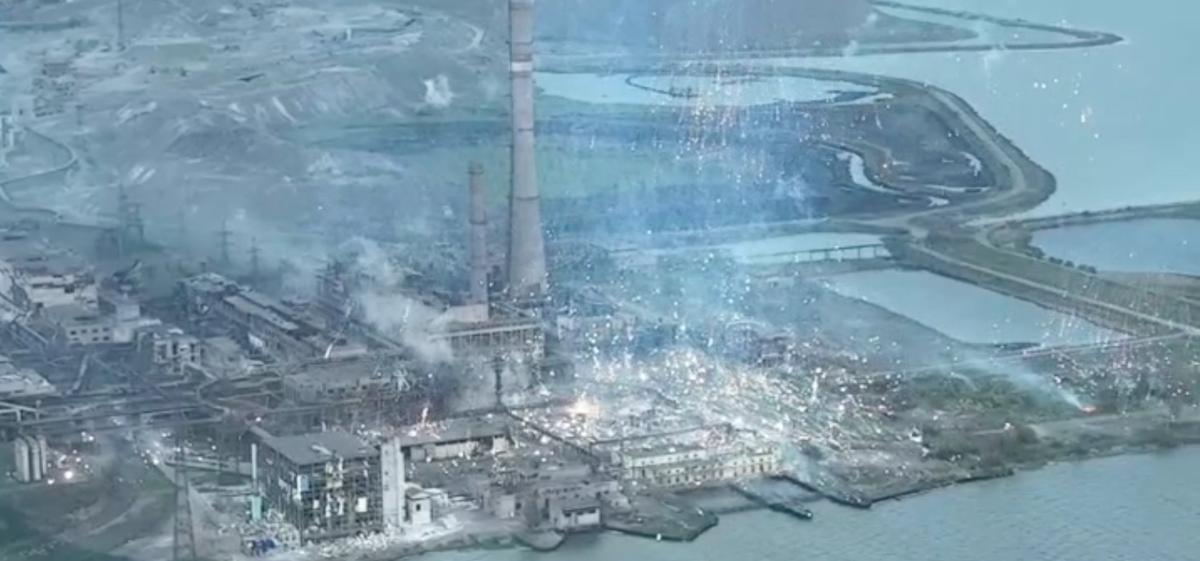Petro Andriushchenko, a Mariupol official, has accused Russia of shelling the Azovstal steel plant with ‘fire or phosphorus bombs’.
“The occupants used fire or phosphorus bombs against the defenders of Mariupol yesterday. The hell is now on Earth, at the Azovstal steel plant,” he wrote on his Telegram.

Screenshot from the video of Azovstal bombing
The Russian forces claim they were dropping 9M22S incendiary and phosphorus bombs which combust at up to 2,500C on the steelworks.
The Ukrainian Security Service published an intercepted phone call between two Russian soldiers. It is obvious from the recording that the Russian army is now allowed to use banned shells, including phosphorus bombs.
“Everyone’s waiting here for Volodka [Vladimir Putin] to have enough of this [nonsense], retract our troops and shell this place with Topols [Topol-M intercontinental ballistic missiles]. We’ve been allowed to use whatever banned by international conventions: cluster and phosphorus bombs,” says the recording.
The usage of phosphorus shells is banned by the 1949 Geneva Convention if civilians might be within the striking range. The 2010 convention also bans cluster bombs.
Mariupol is a huge city in the south of the Donetsk region on the coast of the Sea of Azov. The city was surrounded in the early days of the war and remained under siege for more than six weeks. The Azovstal steel plant remains Ukraine’s only defencive position in the besieged Mariupol. The Azov Regiment and civilians were hiding there for 70 days. All women, children and older people were rescued from the besieged Azovstal steel plant on 7 May.
